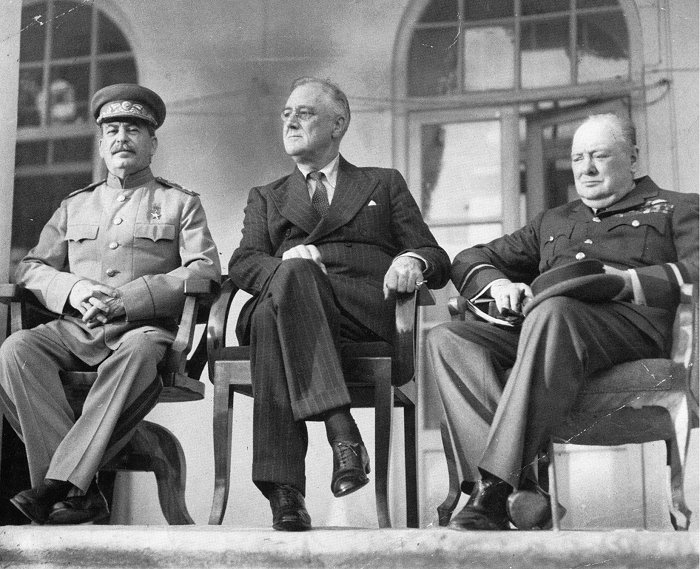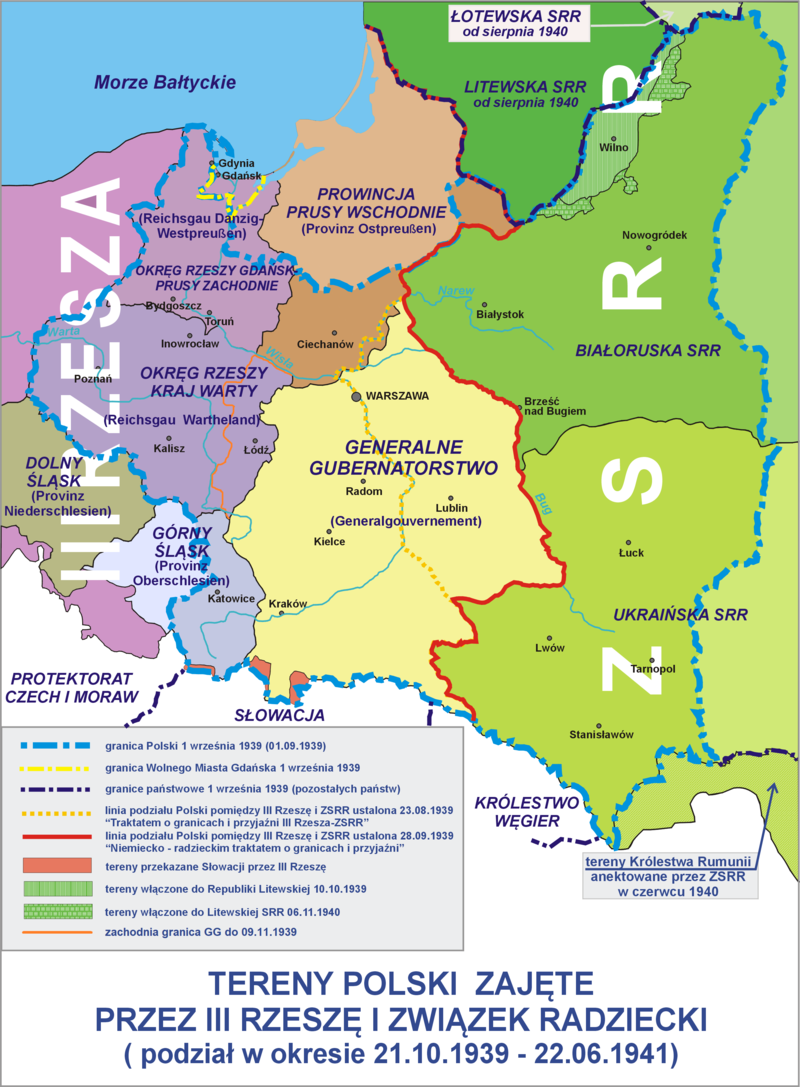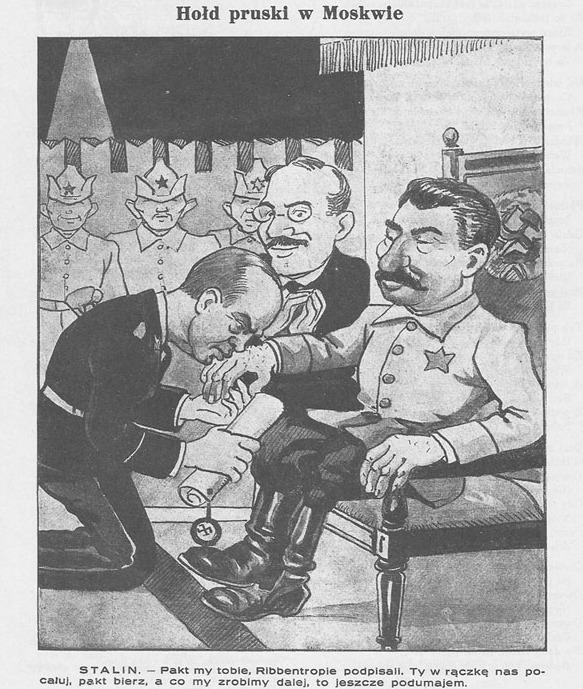
segunda-feira, dezembro 01, 2025
A Conferência de Teerão terminou há 82 anos
Postado por
Fernando Martins
às
08:20
0
bocas
![]()
Marcadores: Alemanha, Conferência de Teerão, Dia D, Estaline, Estónia, Europa, Franklin Delano Roosevelt, II Grande Guerra, II Guerra Mundial, Letónia, Lituânia, países bálticos, Polónia, URSS, Winston Churchill
domingo, setembro 28, 2025
O ferry boat Estonia naufragou há 31 anos...
The official report concluded that the bow door had separated from the vessel, pulling the ramp ajar. The ship was already listing because of poor cargo distribution, and the list increased rapidly, flooding the decks and the cabins. Shortly, power failed altogether, inhibiting search and rescue, and a full-scale emergency was not declared for 90 minutes. Of the 989 on board, 138 were rescued. The report criticised the passive attitude of the crew, failing to notice that water was entering the vehicle deck, delaying the alarm, and providing minimal guidance from the bridge.
Postado por
Fernando Martins
às
00:31
0
bocas
![]()
Marcadores: Estonia, ferry boat, Naufrágio, países bálticos
quarta-feira, setembro 17, 2025
Como foi aprovado por Hitler e decidido por Estaline, a URSS atacou a Polónia há 86 anos
Estaline atacou a Polónia no dia 17 de setembro de 1939. De 1939 até 1941, os soviéticos deportaram 500.000 polacos (os funcionários públicos, a nobreza polaca, os padres católicos e os camponeses mais ricos) para a Sibéria. Também assassinaram, barbaramente, 30.000 soldados polacos em Katyn, Ostaszkowo e Charkow. Em 1941 a Alemanha atacou o território soviético.
Postado por
Fernando Martins
às
08:06
0
bocas
![]()
Marcadores: Alemanha, comunistas, Estaline, Hitler, Massacre de Katyn, nazis, Pacto Molotov-Ribbentrop, países bálticos, Polónia, traição, URSS
sábado, agosto 23, 2025
Os povos bálticos deram as mãos, para acabar com a ocupação soviética, há 36 anos...!
Postado por
Fernando Martins
às
00:36
0
bocas
![]()
Marcadores: Alemanha, comunismo, direitos humanos, Estónia, Letónia, Lituânia, nazis, Pacto Molotov-Ribbentrop, países bálticos, URSS
Estaline comprou os Países Bálticos e parte da Finlândia e Polónia e deu autorização a Hitler para atacar há 86 anos - à semelhança do negócio Putin/Trump de agora...
Antecedentes
Postado por
Fernando Martins
às
00:08
0
bocas
![]()
Marcadores: direitos humanos, Estaline, Estónia, Finlândia, Hitler, Letónia, Lituânia, nazis, ocupação, Pacto Molotov-Ribbentrop, Pacto Ribbentrop-Molotov, países bálticos, Putin, Trump, URSS
segunda-feira, junho 16, 2025
A URSS ocupou os Países Bálticos há 85 anos, como fora decidido previamente por nazis e comunistas...
The Soviet occupation of the Baltic states covers the period from the Soviet–Baltic mutual assistance pacts in 1939, to their invasion and annexation in 1940, to the mass deportations of 1941.
On June 12, 1940, according to the director of the Russian State Archive of the Naval Department Pavel Petrov (C.Phil.) referring to the records in the archive, the Soviet Baltic Fleet was ordered to implement a total military blockade of Estonia. On June 13 at 10:40 AM Soviet forces started to move to their positions and were ready by June 14 at 10 PM: Four submarines and a number of light navy units were positioned in the Baltic Sea, in the Gulfs of Riga and Finland to isolate the Baltic states by the sea; a navy squadron including three destroyer divisions was positioned to the west of Naissaar in order to support the invasion; the 1st marine brigade's four battalions were positioned on the transport ships Sibir, 2nd Pjatiletka and Elton for landings on the islands Naissaare and Aegna; the transport ship Dnester and destroyers Storozevoi and Silnoi were positioned with troops for the invasion of the capital Tallinn; the 50th battalion was positioned on ships for an invasion near Kunda. 120 Soviet vessels participated in the naval blockade, including one cruiser, seven destroyers, and seventeen submarines, along with 219 airplanes including the 8th air-brigade with 84 DB-3 and Tupolev SB bombers and the 10th brigade with 62 airplanes.
On June 14, 1940, the Soviets issued an ultimatum to Lithuania. The Soviet military blockade of Estonia went into effect while the world's attention was focused on the fall of Paris to Nazi Germany. Two Soviet bombers downed the Finnish passenger airplane "Kaleva" flying from Tallinn to Helsinki carrying three diplomatic pouches from the U.S. legations in Tallinn, Riga and Helsinki. The US Foreign Service employee Henry W. Antheil, Jr. was killed in the crash.
Molotov accused the Baltic states of conspiracy against the Soviet Union and delivered an ultimatum to all Baltic countries for the establishment of Soviet-approved governments. Threatening invasion and accusing the three states of violating the original pacts as well as forming a conspiracy against the Soviet Union, Moscow presented ultimatums, demanding new concessions, which included the replacement of their governments and allowing an unlimited number of troops to enter the three countries. Hundreds of thousands Soviet troops entered Estonia, Latvia, Lithuania. These additional Soviet military forces far outnumbered the armies of each country.
The Baltic governments had decided that, given their international isolation and the overwhelming Soviet forces on their borders and already on their territories, it was futile to actively resist and better to avoid bloodshed in an unwinnable war. The occupation of the Baltic states coincided with a communist coup d'état in each country, supported by the Soviet troops.
Most of the Estonian Defence Forces and the Estonian Defence Leaguesurrendered according to the orders of the Estonian Government and were disarmed by the Red Army. Only the Estonian Independent Signal Battalion stationed in Tallinn at Raua Street showed resistance to the Red Army and "People's Self-Defence" Communist militia, fighting the invading troops on 21 June 1940. As the Red Army brought in additional reinforcements supported by six armoured fighting vehicles, the battle lasted several hours until sundown. Finally the military resistance was ended with negotiations and the Independent Signal Battalion surrendered and was disarmed. There were two dead Estonian servicemen, Aleksei Männikus and Johannes Mandre, and several wounded on the Estonian side and about ten killed and more wounded on the Soviet side. The Soviet militia that participated in the battle was led by Nikolai Stepulov.
Winston Churchill, First Lord of the Admiralty at the time, said in his 1939 radio broadcast: that the Russian armies should stand on this line was clearly necessary for the safety of Russia against the Nazi menace. At any rate, the line is there, and an Eastern front has been created which Nazi Germany does not dare assail. When Herr von Ribbentrop was summoned to Moscow last week it was to learn the fact, and to accept the fact, that the Nazi designs upon the Baltic States and upon the Ukraine must come to a dead stop.
Political repressions followed with mass deportations carried out by the Soviets. The Serov Instructions, "On the Procedure for carrying out the Deportation of Anti-Soviet Elements from Lithuania, Latvia, and Estonia", contained detailed procedures and protocols to observe in the deportation of Baltic nationals.
The Soviets began a constitutional metamorphosis of the Baltic states by first forming transitional "People's Governments." Led by Stalin’s close associates, and local communist supporters as well as official brought in from the Soviet Union, they forced the presidents and governments of all three countries to resign, replacing them with the provisional People's Governments.
On July 14–15, following illegal amendments to the electoral laws of the respective states, rigged parliamentary elections for the "People's Parliaments" were conducted by local Communists loyal to the Soviet Union. Because of new election restrictions in the amended electoral laws, only the Communists and their allies were effectively allowed to run. The election results were completely fabricated: the Soviet press service released them early, with the result that they had already appeared in print in a London newspaper a full 24 hours before the polls closed.
The new Soviet-installed governments in the Baltic states began to align their policies with current Soviet practices. According to the prevailing doctrine in the process, the old "bourgeois" societies were destroyed so that new socialist societies, run by loyal Soviet citizens, could be constructed in their place.
Postado por
Fernando Martins
às
08:50
0
bocas
![]()
Marcadores: direitos humanos, Estónia, Letónia, Lituânia, ocupação, Pacto Molotov-Ribbentrop, países bálticos, URSS
sábado, junho 14, 2025
A Lituânia sofreu um ultimato soviético há 85 anos...
Com as tropas soviéticas já estacionadas no país, conforme o Tratado de Assistência Mútua, foi impossível organizar uma resistência militar eficaz. Em 15 de junho, a Lituânia aceitou incondicionalmente o ultimato e perdeu a sua independência. Os soviéticos tentaram mostrar ao mundo que isso não era uma ocupação militar e anexação, mas uma revolução socialista legítima, iniciada pela população local exigindo a adesão à União Soviética. Portanto, os soviéticos seguiram procedimentos semi-legais: assumiram o controle das instituições governamentais, instalaram um novo governo fantoche, e realizaram falsas eleições para o Seimas Popular. Durante a sua primeira sessão, o Seimas proclamou criação da República Socialista Soviética da Lituânia e solicitou a admissão na União Soviética. A petição foi oficialmente aceita pelo Soviete Supremo da União Soviética em 3 de agosto de 1940, ao mesmo tempo que processos quase idênticos ocorreriam na Letónia e Estónia. A Lituânia não iria recuperar a sua independência até à proclamação da Declaração de Restabelecimento do Estado da Lituânia, em 11 de março de 1990.
Postado por
Fernando Martins
às
08:50
0
bocas
![]()
Marcadores: anexação, Lituânia, Pacto Molotov-Ribbentrop, Pacto Ribbentrop-Molotov, países bálticos, URSS
domingo, dezembro 01, 2024
A Conferência de Teerão terminou há 81 anos
Postado por
Fernando Martins
às
08:10
0
bocas
![]()
Marcadores: Alemanha, Conferência de Teerão, Dia D, Estaline, Estónia, Europa, Franklin Delano Roosevelt, II Grande Guerra, II Guerra Mundial, Letónia, Lituânia, países bálticos, Polónia, URSS, Winston Churchill
sábado, setembro 28, 2024
O ferry boat Estonia naufragou há trinta anos...
The official report concluded that the bow door had separated from the vessel, pulling the ramp ajar. The ship was already listing because of poor cargo distribution, and the list increased rapidly, flooding the decks and the cabins. Shortly, power failed altogether, inhibiting search and rescue, and a full-scale emergency was not declared for 90 minutes. Of the 989 on board, 138 were rescued. The report criticised the passive attitude of the crew, failing to notice that water was entering the vehicle deck, delaying the alarm, and providing minimal guidance from the bridge.
Postado por
Fernando Martins
às
00:30
0
bocas
![]()
Marcadores: Estonia, ferry boat, Naufrágio, países bálticos
terça-feira, setembro 17, 2024
Como foi aprovado por Hitler e decidido por Estaline, a União Soviética atacou a Polónia há 85 anos
Estaline atacou a Polónia no dia 17 de setembro de 1939. De 1939 até 1941, os soviéticos deportaram 500.000 polacos (os funcionários públicos, a nobreza polaca, os padres católicos e os camponeses mais ricos) para a Sibéria. Também assassinaram, barbaramente, 30.000 soldados polacos em Katyn, Ostaszkowo e Charkow. Em 1941 a Alemanha atacou o território soviético.
Postado por
Fernando Martins
às
08:50
0
bocas
![]()
Marcadores: Alemanha, comunistas, Estaline, Hitler, Massacre de Katyn, nazis, Pacto Molotov-Ribbentrop, países bálticos, Polónia, traição, URSS
sexta-feira, agosto 23, 2024
Estaline comprou os Países Bálticos, parte da Finlândia e meia Polónia e deu autorização a Hitler para começar a guerra há 85 anos...
Antecedentes
Postado por
Fernando Martins
às
08:50
0
bocas
![]()
Marcadores: direitos humanos, Estaline, Estónia, Finlândia, Hitler, Letónia, Lituânia, nazis, ocupação, Pacto Molotov-Ribbentrop, Pacto Ribbentrop-Molotov, países bálticos, URSS
Os povos bálticos deram as mãos (para acabar com a ocupação soviética...) há 35 anos...!
Postado por
Pedro Luna
às
00:35
0
bocas
![]()
Marcadores: Alemanha, comunismo, direitos humanos, Estónia, Letónia, Lituânia, nazis, Pacto Molotov-Ribbentrop, países bálticos, URSS
domingo, junho 16, 2024
A URSS ocupou os países bálticos há 84 anos, como fora acordado por nazis e comunistas
The Soviet occupation of the Baltic states covers the period from the Soviet–Baltic mutual assistance pacts in 1939, to their invasion and annexation in 1940, to the mass deportations of 1941.
On June 12, 1940, according to the director of the Russian State Archive of the Naval Department Pavel Petrov (C.Phil.) referring to the records in the archive, the Soviet Baltic Fleet was ordered to implement a total military blockade of Estonia. On June 13 at 10:40 AM Soviet forces started to move to their positions and were ready by June 14 at 10 PM: Four submarines and a number of light navy units were positioned in the Baltic Sea, in the Gulfs of Riga and Finland to isolate the Baltic states by the sea; a navy squadron including three destroyer divisions was positioned to the west of Naissaar in order to support the invasion; the 1st marine brigade's four battalions were positioned on the transport ships Sibir, 2nd Pjatiletka and Elton for landings on the islands Naissaare and Aegna; the transport ship Dnester and destroyers Storozevoi and Silnoi were positioned with troops for the invasion of the capital Tallinn; the 50th battalion was positioned on ships for an invasion near Kunda. 120 Soviet vessels participated in the naval blockade, including one cruiser, seven destroyers, and seventeen submarines, along with 219 airplanes including the 8th air-brigade with 84 DB-3 and Tupolev SB bombers and the 10th brigade with 62 airplanes.
On June 14, 1940, the Soviets issued an ultimatum to Lithuania. The Soviet military blockade of Estonia went into effect while the world's attention was focused on the fall of Paris to Nazi Germany. Two Soviet bombers downed the Finnish passenger airplane "Kaleva" flying from Tallinn to Helsinki carrying three diplomatic pouches from the U.S. legations in Tallinn, Riga and Helsinki. The US Foreign Service employee Henry W. Antheil, Jr. was killed in the crash.
Molotov accused the Baltic states of conspiracy against the Soviet Union and delivered an ultimatum to all Baltic countries for the establishment of Soviet-approved governments. Threatening invasion and accusing the three states of violating the original pacts as well as forming a conspiracy against the Soviet Union, Moscow presented ultimatums, demanding new concessions, which included the replacement of their governments and allowing an unlimited number of troops to enter the three countries. Hundreds of thousands Soviet troops entered Estonia, Latvia, Lithuania. These additional Soviet military forces far outnumbered the armies of each country.
The Baltic governments had decided that, given their international isolation and the overwhelming Soviet forces on their borders and already on their territories, it was futile to actively resist and better to avoid bloodshed in an unwinnable war. The occupation of the Baltic states coincided with a communist coup d'état in each country, supported by the Soviet troops.
Most of the Estonian Defence Forces and the Estonian Defence Leaguesurrendered according to the orders of the Estonian Government and were disarmed by the Red Army. Only the Estonian Independent Signal Battalion stationed in Tallinn at Raua Street showed resistance to the Red Army and "People's Self-Defence" Communist militia, fighting the invading troops on 21 June 1940. As the Red Army brought in additional reinforcements supported by six armoured fighting vehicles, the battle lasted several hours until sundown. Finally the military resistance was ended with negotiations and the Independent Signal Battalion surrendered and was disarmed. There were two dead Estonian servicemen, Aleksei Männikus and Johannes Mandre, and several wounded on the Estonian side and about ten killed and more wounded on the Soviet side. The Soviet militia that participated in the battle was led by Nikolai Stepulov.
Winston Churchill, First Lord of the Admiralty at the time, said in his 1939 radio broadcast: that the Russian armies should stand on this line was clearly necessary for the safety of Russia against the Nazi menace. At any rate, the line is there, and an Eastern front has been created which Nazi Germany does not dare assail. When Herr von Ribbentrop was summoned to Moscow last week it was to learn the fact, and to accept the fact, that the Nazi designs upon the Baltic States and upon the Ukraine must come to a dead stop.
Political repressions followed with mass deportations carried out by the Soviets. The Serov Instructions, "On the Procedure for carrying out the Deportation of Anti-Soviet Elements from Lithuania, Latvia, and Estonia", contained detailed procedures and protocols to observe in the deportation of Baltic nationals.
The Soviets began a constitutional metamorphosis of the Baltic states by first forming transitional "People's Governments." Led by Stalin’s close associates, and local communist supporters as well as official brought in from the Soviet Union, they forced the presidents and governments of all three countries to resign, replacing them with the provisional People's Governments.
On July 14–15, following illegal amendments to the electoral laws of the respective states, rigged parliamentary elections for the "People's Parliaments" were conducted by local Communists loyal to the Soviet Union. Because of new election restrictions in the amended electoral laws, only the Communists and their allies were effectively allowed to run. The election results were completely fabricated: the Soviet press service released them early, with the result that they had already appeared in print in a London newspaper a full 24 hours before the polls closed.
The new Soviet-installed governments in the Baltic states began to align their policies with current Soviet practices. According to the prevailing doctrine in the process, the old "bourgeois" societies were destroyed so that new socialist societies, run by loyal Soviet citizens, could be constructed in their place.
Postado por
Fernando Martins
às
08:40
0
bocas
![]()
Marcadores: direitos humanos, Estónia, Letónia, Lituânia, ocupação, Pacto Molotov-Ribbentrop, países bálticos, URSS











